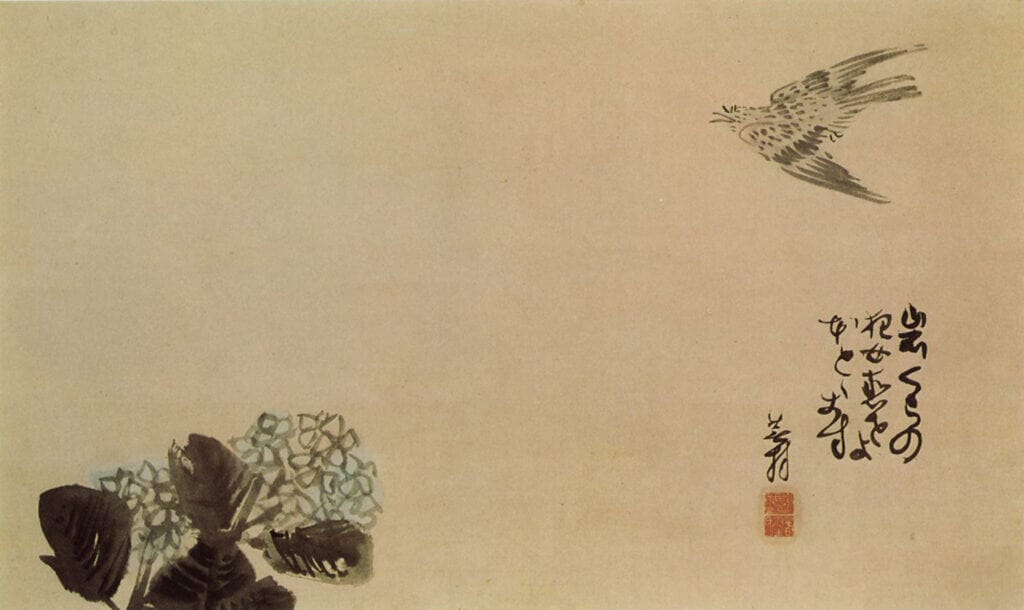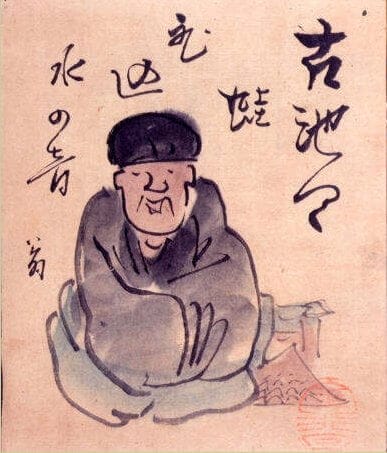These three different but related art forms are intertwined in Japanese art and writing, so much so that specific types of writing and painting involve combining images with text. These celebrated styles of expression have been practiced for hundreds of years and can tell those interested in Japanese literature a great deal about cultural values and aesthetics.
These art forms are highly esteemed and have a long-standing tradition in East Asian culture. They are considered the pinnacle of artistic expression and are often practiced and appreciated together. The Three Perfections share common principles and aesthetics, and many artists strive to master all three disciplines.
What Are the Three Perfections?
The Three Perfections in East Asian countries, like Japan and China, are:
- Poetry
- Painting
- Calligraphy
They are considered to be related endeavors that can be traced back to the New Book of Tang in China. Chinese poets like Li Bai and Du Fu are often directly connected to a combination of these styles.
The Three Perfections also took hold in Japan, where poets started combining and practicing with equal reverence these three forms of artistic expression.
Poetry
Japan is as known for poetry as they are for painting and calligraphy. It has a long and beautiful history that includes a variety of styles and forms. One of the earliest forms of Japanese poetry is waka, which includes the well-known forms of tanka and choka. Tanka consists of five lines with a syllable pattern of 5-7-5-7-7, while choka is a longer form with alternating lines of 5 and 7 syllables.

The haiku is the best-known Japanese poetic form and the most commonly written today. It developed in the 17th century and consists of three lines with a syllable pattern of 5-7-5. Haiku often captures a fleeting moment in nature by conveying deep emotions or insights.
In Japan, the appreciation of poetry extends beyond the written word. Poetry is often intertwined with other art forms, such as calligraphy, painting, and tea ceremony, creating a holistic experience of beauty and contemplation.
O snail by Kobayashi Issa
‘O snail’ is a lovely example of traditional Japanese poetry. It celebrates nature while also inspiring readers to take their time to overcome great obstacles. The poem describes a snail and how, if it climbs slowly, it could reach the summit of Mt. Fuji.
O snail,
climb Mt. Fuji,
but slowly, slowly
The poem celebrates the adage, “Slow and steady wins the race.”
Read more Kobayashi Issa poems.
Painting
Japanese painting is a traditional art form that has a long and complex history. It includes a wide range of styles and techniques and is often included with poetry and calligraphy as an important part of Japanese culture.
In the realm of painting is a form of writing known as the haiga. These are poems that combine haiku or senryu with paintings or drawings. They were, and still are, quite popular around the world and among those hoping to try out the traditions of Japanese poetry.
Together, the poem and painting make a single work of art that’s more effective than the poem or painting would’ve been on its own.
A little cuckoo across a hydrangea by Yosa Buson
This is one of a few great examples of haiga poetry by well-known Japanese poets. It shows the general artistic style of the period and how calligraphic Japanese writing and poetry is mixed with painted imagery.

Explore more Yosa Buson poems.
Calligraphy
Japanese calligraphy, also known as “shodō” or “shūji,” is an artistic style of writing that was based on Chinese characters. But, it developed over time with specific Japanese characters being implemented.
Shodo is an art form that encompasses not only technical skills (like those related to writing and understanding letters/words) but also an expression of personal and cultural values. A great deal of emotion can be found in calligraphy. It dates back to the 5th century but has evolved over time.
Calligraphy is also part of another grouping known as the “Four Arts” of Japanese culture. These include tea ceremonies, flower arrangements, and incense appreciation.
Calligraphy involves using a brush and ink to create beautiful characters and symbols on high-quality paper. The way the symbols are painted and their arrangement adds to the writer’s expressive individuality.
The intersection of Calligraphy and Art
Calligraphy is not only considered a form of skilled writing but also a deeply artistic and expressive practice. In Japan, calligraphy is regarded as an art form in its own right and holds a significant place within the broader realm of visual arts.
Both calligraphy and visual arts in Japan strive to achieve balance, harmony, and beauty in their compositions. The principles of line, form, space, and rhythm are highly valued in both disciplines.

As noted above, calligraphers carefully consider the arrangement of characters, the flow of brushstrokes, and the overall visual impact of their work, much like artists in other visual mediums.
This combination of mediums has continued into modern art. For example, poets/artists like Mitsuo Aida have become incredibly well-known for the artistic presentation of their calligraphic writing in addition to their poetry.
FAQs
Some famous forms of Japanese poetry include tanka, haiku, and choka. Tanka consists of five lines with a syllable pattern of 5-7-5-7-7, while haiku has three lines with a syllable pattern of 5-7-5.
Calligraphy, known as Shodō, plays a vital role in Japanese art. It is considered a form of artistic writing and is highly regarded in Japanese culture. Calligraphy involves using brushes and ink to create visually appealing characters and symbols, emphasizing balance, rhythm, and individual expression.
Japan is known for its traditions, including tea ceremonies, flower arrangements, and calligraphy. Politeness and respect are valued, with bowing being a customary form of greeting. Japanese cuisine, with its emphasis on fresh ingredients and seasonal flavors, is renowned worldwide.
Japanese painting encompasses styles such as Yamato-e, which depicts scenes from Japanese history and courtly life. There is also Rinpa, known for decorative compositions and natural motifs. Another style is Ukiyo-e, featuring prints of everyday life in the Edo period.







